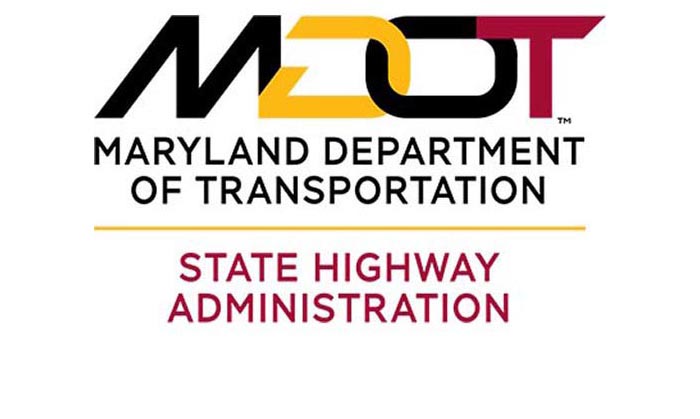
MDOT SHA Logo
Contacts:
Valerie Burnette Edgar, SHA, 410-545-0303
Jim Brown, MIEMSS, 410-706-3994
Kim Hoppe, Johns Hopkins Children’s Center, 410-516-4934
NEW BOOSTER SEAT LAW PROTECTS MORE CHILDREN IN MARYLAND
Lt. Governor, Legislators, Health and Safety Officials Join Together And Promote New Law That Boosts Child Safety
(July 1, 2008) – Yesterday at the Johns Hopkins Children’s Center, the forefront of pediatric medicine, research, and education, Lt. Governor Anthony G. Brown joined legislators, health and safety officials and parents to give a boost to child health and safety by promoting Maryland’s new booster seat law that went into effect yesterday morning. Including bill sponsors Senator Jennie Forehand, Delegate Bill Bronrott, Dr. Allen Walker, Director of Pediatric Emergency Medicine at Johns Hopkins Children’s Center and Associate Pediatric Medical Director of the Maryland Institute for Emergency Medical Services Systems, Maryland State Highway Administrator Neil J. Pedersen, Baltimore City of Transportation Director Al Foxx, Baltimore City Fire Department Chief Kevin Cartwright, Director of the Office of Communications and other health and safety advocates, the assemblage stressed to parents that seat belts save lives, but that seat belts only work when worn correctly. The new law extends the time a child is required to be in a booster seat from age six to age eight (or until they weight more than 65 pounds or reach the height of 4’9” tall).
“Governor O’Malley and I share a deep concern about keeping our children safe,” said Lt. Governor Brown. “This strengthened law will protect tens of thousands more lives of children who are most at risk on our roadways.”Maryland becomes the 20th state to have a model child booster seat law due to recently passed legislation that was sponsored by Delegate Bill Bronrott and Senator Jennie Forehand and signed into law by Governor O’Malley last month. The primary goal of Maryland’s new and improved child booster seat law is to increase car safety in Maryland for a high risk population -- children ages six and seven who previously were not required to ride in a booster seat. Children between the ages of four and eight are typically too big for a child safety seat and too small for a regular seat belt.
“As an emergency department physician, there is nothing more frustrating than seeing a child with injuries that could have been easily prevented,” said Dr. Walker. “We truly believe this new law will save lives and prevent injuries for Maryland's children.”
Booster seats provide a platform that lifts the child up off the vehicle seat in order to improve the fit of the adult seat belt. An improper fit of a seat belt can cause the lap belt to ride up over the stomach and the shoulder belt to cut across the neck, potentially exposing the child to serious abdominal and/or neck injury. When children are properly restrained in a child safety seat, booster seat, or seat belt (as appropriate for age and size), their chance of death or injury in a crash is greatly reduced. In addition to protecting more child passengers from the leading threat to their lives, this new law will make Maryland eligible for additional federal highway safety funds over the next two years.
“The Baltimore City Fire Department has been committed for years to helping keep children safe from injury by partnering with the Baltimore City Safe Kids coalition in many injury prevention efforts; including making child safety seat inspections available. Our goal is to ensure that all of the children of Baltimore City are properly secured in car seats and seat belts while traveling,” said City of Baltimore Fire Chief James Clack.
Motor vehicle crashes are the #1 cause of death and injury of children age 3 and older in the United States. In 2006, 444 children ages 4 through 7 died and nearly 50,000 children were injured in motor vehicle crashes nationwide. Nearly one-half of these child passengers killed in crashes were not properly restrained. Child booster seats can substantially reduce the risk of death and injury to children, but only an average of 1 in 5 children ages 4 to 8 use them nationwide. Children in this age group are at increased risk of injury or death due to either inappropriate restraint in adult seat belts or lack of any restraint at all.
“Now Maryland comes into line with all the other states in the Mid-Atlantic region that have already enacted this lifesaving law to protect child passengers who have outgrown their car safety seats but are too small for a standard seat belt,” said Delegate Bill Bronrott (D-District 16), House sponsor of the booster seat bill. “Highway crashes are the number one cause of death and disabling injury of kids, so nothing is more important than making sure that every child is correctly buckled up every ride.”
Senator Jennie Forehand who sponsored the legislation in the State Senate said, “This is another step in the right direction for keeping our youngest and most vulnerable children safe. The additional federal funding that Maryland is now eligible for can be used to educate parents and provide child safety seats and boosters to families who cannot afford them.”
Today’s promotion of the new safety seat law is part of the Choose Safety for Life campaign’s 100 days of safety, which promotes traffic safety through the acronym
B-SAFE – Buckle up, Slow down – speeding kills, Always drive sober, Focus and Everyone share the road – Everyone gets home. By following all five key steps in the B-SAFE acronym, more than 600 lives could be saved each year in Maryland. Log onto www.choosesafetyforlife.com for more information.
# # #